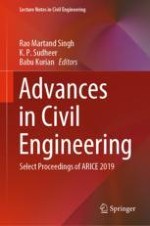2021 | OriginalPaper | Buchkapitel
Effect of Rigidity on Seismic Analysis of Structures
verfasst von : M. Dhileep, P. D. Arumairaj, G. Hemalatha, M. S. Sandeep
Erschienen in: Advances in Civil Engineering
Verlag: Springer Singapore
Aktivieren Sie unsere intelligente Suche, um passende Fachinhalte oder Patente zu finden.
Wählen Sie Textabschnitte aus um mit Künstlicher Intelligenz passenden Patente zu finden. powered by
Markieren Sie Textabschnitte, um KI-gestützt weitere passende Inhalte zu finden. powered by
